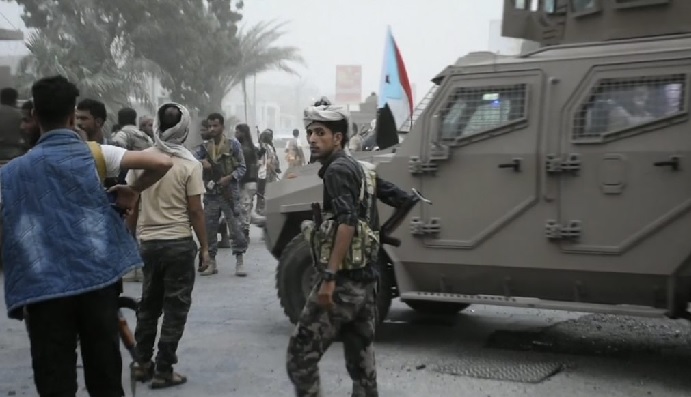
Bottom Line Up Front
In late April, Emirati-supported separatists in southern Yemen declared self-administration, demonstrating further strains in the Saudi Coalition and a growing divergence of interests between Riyadh and Abu Dhabi.
The actions of the Southern Transitional Council (STC) stem in part from ongoing delays in the implementation of a unilateral cease-fire, announced by Saudi Arabia in early April.
Even if recent developments do not signal a more formal break in the alliance between Saudi Arabia and the UAE, what they do suggest is that Abu Dhabi seems unwilling to trust Riyadh in achieving foreign and security policy objectives on the former’s behalf.
The timing was interesting considering that within the same 48-hour time period, Emirati-backed Libyan warlord Khalifa Haftar dissolved the parliament declaring himself the ruler of Libya, a move effectively ending the 2015 Skhirat Agreement.
Toward the end of April, separatists in southern Yemen declared a state of emergency and decree of self-administration, in blatant violation of the peace deal forged in November 2019 in the Saudi capital of Riyadh. That deal forged a power-sharing agreement that aimed at forming a unity government, though few of the benchmarks were ever reached. Since November, the erstwhile allies have engaged in on-again, off-again squabbling and recent flooding in Aden led both sides to blame the other for the ineptitude of the response. Fighting erupted last week on the island of Socotra between forces from the Southern Transitional Council (STC) and those loyal to the Hadi government. The STC, which is based in the port city of Aden and backed by the United Arab Emirates (UAE), made the move toward self-administration after detailing the failures of the Hadi government.
The Yemeni government, backed by Saudi Arabia, released a statement declaring the consequences of the self-administration declaration ‘dangerous and catastrophic,’ and even the UAE said it opposed the declaration, at least rhetorically, and urged the separatists to honor the power sharing agreement. But few believe the STC would have made such a provocative move without at least the tacit approval of Abu Dhabi. After all, STC President Aidarus al-Zubaydi, who signed the statement, and other leaders are based in Abu Dhabi and al-Zubaydi has delivered speeches from the Emirati capital in the past. The Emiratis have also become concerned that Islamist elements, including al-Islah, have been allowed to gain influence in Yemen’s government. The split is emblematic of a broader fissure in the Saudi-Emirati relationship. The UAE withdrew a significant portion of its forces last year, signaling a lack of confidence in Riyadh’s ability to stabilize Yemen. The timing was also interesting considering that within the same 48-hour time-period, Emirati-backed Libyan warlord Khalifa Haftar declared himself the ruler of Libya while condemning the 2015 Skhirat Agreement.
The STC’s actions also stem from ongoing delays in implementing a unilateral cease-fire, announced by Saudi Arabia in early April. However, the truce has not lead to a respite from violence and some observers believe the Saudis’ decision was merely one of expediency—Saudi Arabia has struggled with domestic economic concerns stemming from the Kingdom’s oil price war with Russia, as well as dealing with the coronavirus spread in the kingdom. The coronavirus is also likely to devastate Yemen, the poorest country in the Middle East. From the beginning, the war in Yemen has been disastrous and mismanaged by the Saudis. Crown Prince Mohammed bin Salman (MBS) famously boasted that the war would be over in a matter of weeks, after the Saudis began their attack in 2015. The conflict has destroyed Yemen’s infrastructure, contributed to poverty, famine, and disease, and further weakened an already fragile state. More than 100,000 people have been killed in the conflict to date, the vast majority of them civilians, including women and children. Despite air power dominance and a massive military budget, Riyadh has been unable to break the stalemate in Yemen, struggling to counter the Houthi military effort throughout the country.
Even if recent developments do not signal a more formal break in the alliance between Saudi Arabia and the UAE, what they do suggest is that Abu Dhabi seems unwilling to trust Riyadh in achieving foreign and security policy objectives on the former’s behalf. This means that the UAE is likely to assert further independence and pursue its own narrowly defined goals, even if that means increased friction with the Kingdom as both countries seek to navigate conflicts in Yemen and Libya while attempting to portray a unified front against growing Iranian regional influence. Under successive administrations, first President Obama and now President Trump, the United States has been content to defer to its allies in the Middle East. In turn, this has encouraged them—particularly Saudi Arabia and the UAE—to carve up client-state fiefdoms and extend patronage networks as a form of proxy warfare, thus prolonging civil wars in the region and contributing to further instability throughout the Middle East and North Africa.
 Eurasia Press & News
Eurasia Press & News


